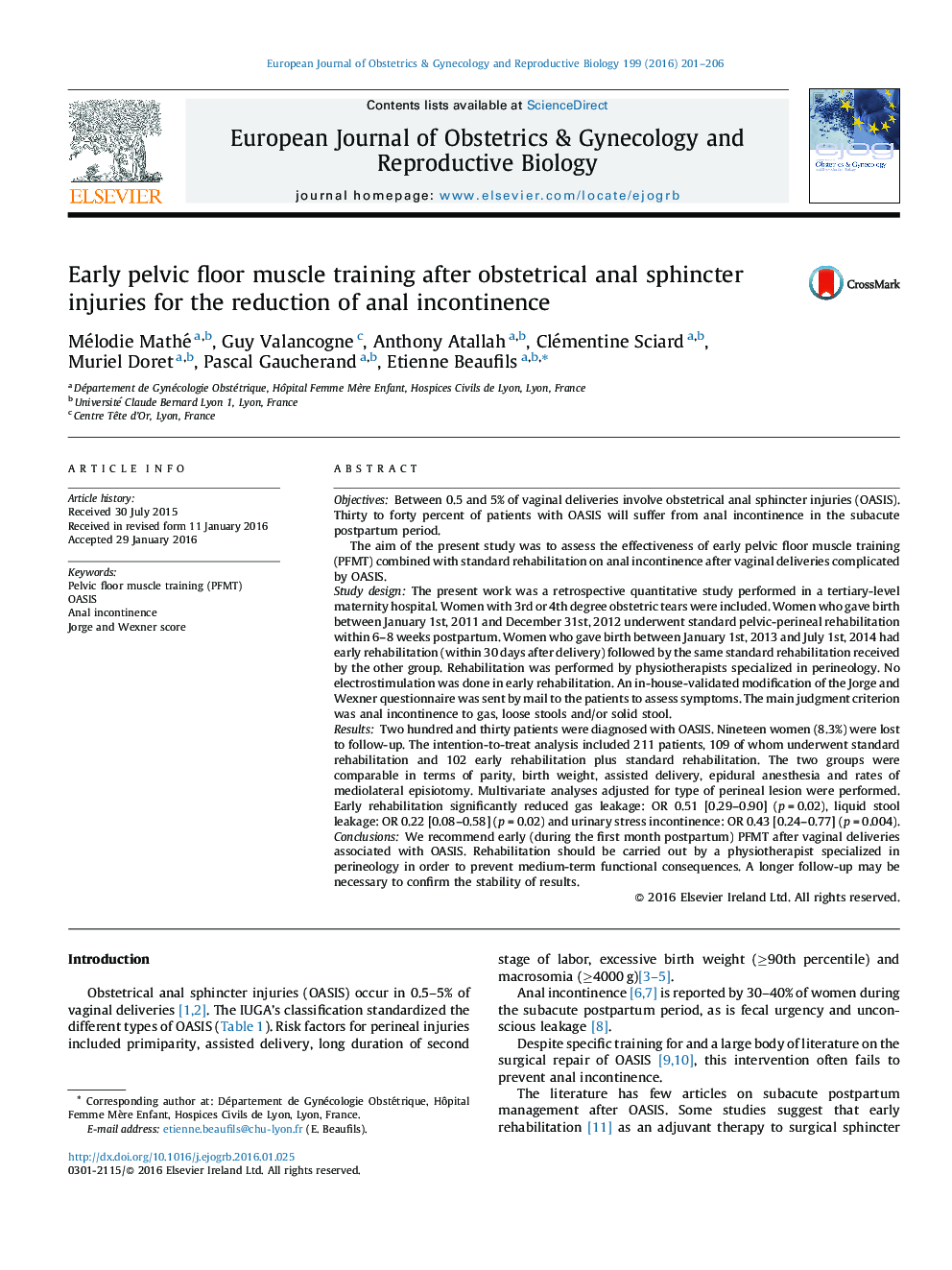| کد مقاله | کد نشریه | سال انتشار | مقاله انگلیسی | نسخه تمام متن |
|---|---|---|---|---|
| 3919506 | 1599782 | 2016 | 6 صفحه PDF | دانلود رایگان |
ObjectivesBetween 0.5 and 5% of vaginal deliveries involve obstetrical anal sphincter injuries (OASIS). Thirty to forty percent of patients with OASIS will suffer from anal incontinence in the subacute postpartum period.The aim of the present study was to assess the effectiveness of early pelvic floor muscle training (PFMT) combined with standard rehabilitation on anal incontinence after vaginal deliveries complicated by OASIS.Study designThe present work was a retrospective quantitative study performed in a tertiary-level maternity hospital. Women with 3rd or 4th degree obstetric tears were included. Women who gave birth between January 1st, 2011 and December 31st, 2012 underwent standard pelvic-perineal rehabilitation within 6–8 weeks postpartum. Women who gave birth between January 1st, 2013 and July 1st, 2014 had early rehabilitation (within 30 days after delivery) followed by the same standard rehabilitation received by the other group. Rehabilitation was performed by physiotherapists specialized in perineology. No electrostimulation was done in early rehabilitation. An in-house-validated modification of the Jorge and Wexner questionnaire was sent by mail to the patients to assess symptoms. The main judgment criterion was anal incontinence to gas, loose stools and/or solid stool.ResultsTwo hundred and thirty patients were diagnosed with OASIS. Nineteen women (8.3%) were lost to follow-up. The intention-to-treat analysis included 211 patients, 109 of whom underwent standard rehabilitation and 102 early rehabilitation plus standard rehabilitation. The two groups were comparable in terms of parity, birth weight, assisted delivery, epidural anesthesia and rates of mediolateral episiotomy. Multivariate analyses adjusted for type of perineal lesion were performed. Early rehabilitation significantly reduced gas leakage: OR 0.51 [0.29–0.90] (p = 0.02), liquid stool leakage: OR 0.22 [0.08–0.58] (p = 0.02) and urinary stress incontinence: OR 0.43 [0.24–0.77] (p = 0.004).ConclusionsWe recommend early (during the first month postpartum) PFMT after vaginal deliveries associated with OASIS. Rehabilitation should be carried out by a physiotherapist specialized in perineology in order to prevent medium-term functional consequences. A longer follow-up may be necessary to confirm the stability of results.
Journal: European Journal of Obstetrics & Gynecology and Reproductive Biology - Volume 199, April 2016, Pages 201–206
